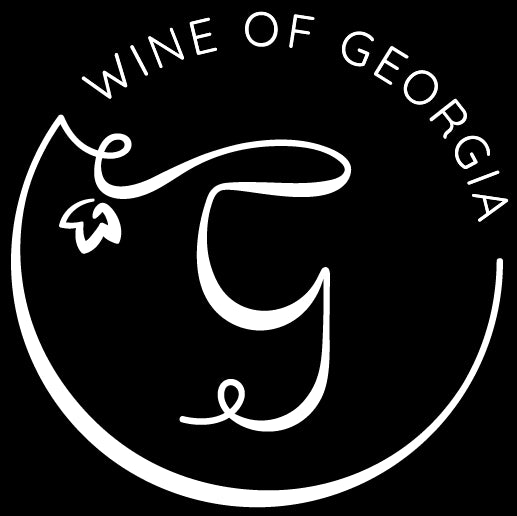Georgian wine
History of Georgian wine
Georgia is the birthplace of wine in the world. The roots of Georgian wine history stretch a long way back. There is evidence of vinification methods being employed in the country a staggering 8,000 years ago. No other country can date its wine-making history so far back into the ancient past. Not France, not Italy and not Spain. Georgian natural wine is unique in its preservation through the ages, and now it’s delighting natural wine enthusiasts all over the world, who have become bored with the status quo.
Coast to coast, trendy bars and restaurants are flocking to Georgian wines across the United States, from Los Angles, the City of Angels, to New York, the Big Apple. Wine imports from Georgia to the US doubled from 2017-2018.
But what makes Georgian wine so special, and what is its appeal to drinkers throughout Europe and the West at large?
UNESCO
has inscribed the ancient Georgian traditional qvevri wine-making method on its Representative List of Intangible Cultural Heritage of Humanity.

Georgian wine grape varieties and wine growing regions
Georgia is a small country of just under four million people. The Caucasus region country is bordered by the Black Sea on its western coast, with the looming presence of Russia to the north, Turkey and Armenia to the south and Azerbaijan to the east.
Size isn’t everything, and Georgia’s location doesn’t limit the diversity of grape varieties grown in the country. In fact, there are 530 grape varieties indigenous to Georgia. Around a tenth (45) are regularly used in wine production for commercial markets.
Most widely grown red grapes
Aladasturi, Aleksandrouli, Chkhaveri, Saperavi, Shavkapito, Takveri & Ojaleshi
Most widely grown white grapes
Chinuri, Kisi, Rkatsiteli, Tsitska, Tsolikouri, Mtsvane
The Kakheti region of eastern Georgia is where the majority of the country’s winemaking is located. The region has around 80 grape varieties - the two most widely used are Saperavi for red wine, and Rkatsiteli, used for making white wine.

A time-honoured and tested tradition
Georgian wine has ancient roots, stretching back through 8,000 years of Georgian history. It has quite literally stood the test of time, the tradition being officially older than the Roman Empire, the Great Pyramid of Giza and the Roman Colosseum. The tradition of Georgian winemaking is truly ancient, and its living and breathing story lives on in every bottle produced today.
The technique of fermenting wine in a qvevri clay pot has been passed down through the generations of Georgian culture, from father to son and mother to daughter, and between friends and neighbours in farming communities. Even during the repressive Stalinist era, when grape varieties and traditional methods were restricted, Georgia’s own traditional methods lived on through small scale family farming, with friends, family members and neighbours communally harvesting grapes.
The process of fermentation used in Georgian winemaking is unique - most countries use oak barrels or stainless-steel tanks to ferment wine. However, in Georgia they use the almost mythical qvevri, a clay pot made of pure terracotta, baked in red clay.
The qvevri is not simply a pot used for fermenting Georgian wine. It’s much more - the shape and structure of the pot helps the wine on its path towards maturity and full-bodied flavour. As the wine develops, from the initial picking of the grape, through to fermentation and racking, the process of qvevri fermentation is like the metaphorical birthing of Georgian wine, as it provides the wine the nourishment it needs to grow and mature.
“It’s no surprise that the Qvevri means the “mother” in the Georgian tongue. Wine producers often humorously comment that European wines are orphans, or motherless wines.”
Stalks, pips, skin and allTo create Georgian wine, grapes are crushed and thrown into the qvevri along with their stalks, skins and pips. This is an important distinguishing feature of Georgian wine. It’s one the world’s first natural wines, which is only now coming back into fashion again. The natural, low-intervention method of Georgian winemaking differs greatly from mass produced modern techniques. Georgian wine is fermented using only the skin’s natural yeast, and no preservatives or sulphites are added to the wine.
To ensure temperature control is consistently managed, qvevri pots are buried in the ground up to their necks to aid the fermentation process. They can hold between 400-2,000 litres or more, and before being buried, the interiors of the egg-shaped clay pots are lined with beeswax to prevent oxidation and ensure a good vinification process.
After they are buried, they are sealed with a clay lid and earth, before being left to ferment for six months, until ultimately making their way in the world.
The egg-shaped pot means that the point of the qvevri collects the sediment of the wine in Its pointed bottom, while the wine circulates in the middle, free from sediment.
The all-important flavour
What’s the use of an innovative brewing process without an end result to show for it? The qvevri certainly doesn’t disappoint. It produces white wines which have a darker colour than many western drinkers are accustomed to. Georgian wines are often a dark straw, gold or even orange colour. Georgian orange wine can confuse new drinkers into thinking they’ll experience orange fruit flavours when drinking Georgian wine, but Georgian white wine is made from familiar green grapes.
Whites can be cloudy, but as opposed to when more modern making methods are employed, this is nothing to be concerned about with natural Georgian wine. The tasting notes vary of course, but peach, apricot, quince and citrus are common. For reds, you’ll find lots of berry flavours and plums are prevalent, as well as blackcurrant and cassis. More surprising flavours include liquorice and dark chocolate.
